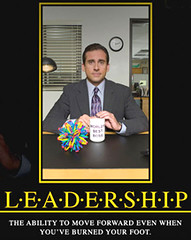
Last week, I mentioned a communication breakdown. On the front end, it was confined to the chair and president of the International Association of Business Communicators (IABC), which is a global network of communicators working in diverse industries, and IABC member David Murray, who has his own ideas about what IABC should be doing. Shel Holtz did a good job with the recap so I won’t repeat it. It’s not very entertaining,...



















